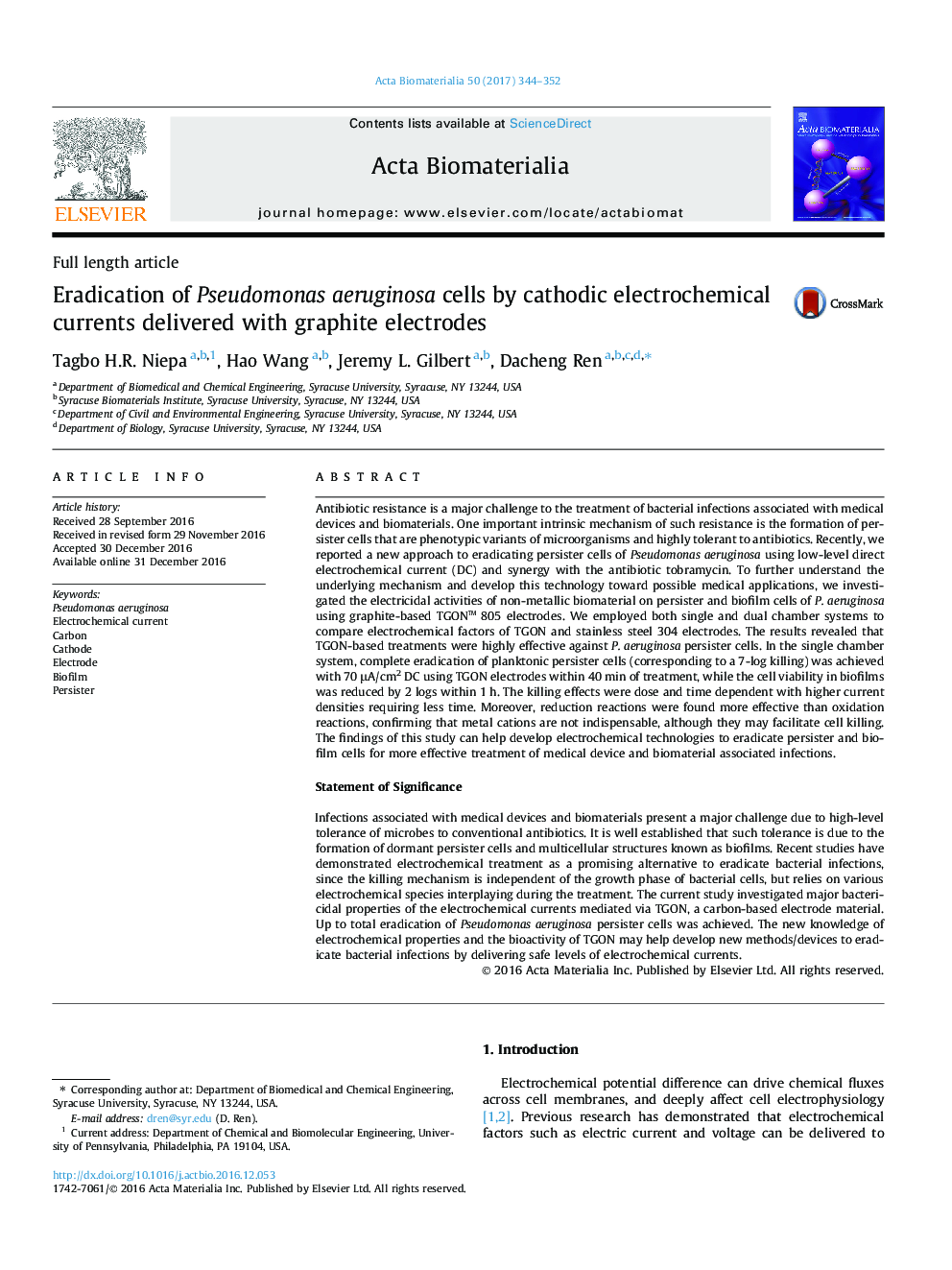| کد مقاله | کد نشریه | سال انتشار | مقاله انگلیسی | نسخه تمام متن |
|---|---|---|---|---|
| 6449720 | 1415936 | 2017 | 9 صفحه PDF | دانلود رایگان |
Antibiotic resistance is a major challenge to the treatment of bacterial infections associated with medical devices and biomaterials. One important intrinsic mechanism of such resistance is the formation of persister cells that are phenotypic variants of microorganisms and highly tolerant to antibiotics. Recently, we reported a new approach to eradicating persister cells of Pseudomonas aeruginosa using low-level direct electrochemical current (DC) and synergy with the antibiotic tobramycin. To further understand the underlying mechanism and develop this technology toward possible medical applications, we investigated the electricidal activities of non-metallic biomaterial on persister and biofilm cells of P. aeruginosa using graphite-based TGON⢠805 electrodes. We employed both single and dual chamber systems to compare electrochemical factors of TGON and stainless steel 304 electrodes. The results revealed that TGON-based treatments were highly effective against P. aeruginosa persister cells. In the single chamber system, complete eradication of planktonic persister cells (corresponding to a 7-log killing) was achieved with 70 μA/cm2 DC using TGON electrodes within 40 min of treatment, while the cell viability in biofilms was reduced by 2 logs within 1 h. The killing effects were dose and time dependent with higher current densities requiring less time. Moreover, reduction reactions were found more effective than oxidation reactions, confirming that metal cations are not indispensable, although they may facilitate cell killing. The findings of this study can help develop electrochemical technologies to eradicate persister and biofilm cells for more effective treatment of medical device and biomaterial associated infections.Statement of SignificanceInfections associated with medical devices and biomaterials present a major challenge due to high-level tolerance of microbes to conventional antibiotics. It is well established that such tolerance is due to the formation of dormant persister cells and multicellular structures known as biofilms. Recent studies have demonstrated electrochemical treatment as a promising alternative to eradicate bacterial infections, since the killing mechanism is independent of the growth phase of bacterial cells, but relies on various electrochemical species interplaying during the treatment. The current study investigated major bactericidal properties of the electrochemical currents mediated via TGON, a carbon-based electrode material. Up to total eradication of Pseudomonas aeruginosa persister cells was achieved. The new knowledge of electrochemical properties and the bioactivity of TGON may help develop new methods/devices to eradicate bacterial infections by delivering safe levels of electrochemical currents.
167
Journal: Acta Biomaterialia - Volume 50, 1 March 2017, Pages 344-352
